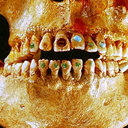In silico Screening and Evaluation of the Anticonvulsant Activity of Docosahexaenoic Acid-Like Molecules in Experimental Models of Seizures.
Palavras-chave
Resumo
Resistance to antiepileptic drugs and the intolerability in 20-30% of the patients raises demand for developing new drugs with improved efficacy and safety. Acceptable anticonvulsant activity, good tolerability, and inexpensiveness of docosahexaenoic acid (DHA) make it as a good candidate for designing and development of the new anticonvulsant medications.
Ten DHA-based molecules were screened based on in silico screening of DHA-like molecules by root-mean-square deviation of atomic positions, the biological activity score of Professional Association for SQL Server, and structural requirements suggested by pharmacophore design. Anticonvulsant activity was tested against clonic seizures induced by pentylenetetrazole (PTZ, 60 mg/kg, i.p.) and tonic seizures induced by maximal electroshock (MES, 50 mA, 50 Hz, 1 ms duration) by intracerebroventricular (i.c.v.) injection of the screened compounds to mice.
Among screened compounds, 4-Phenylbutyric acid, 4-Biphenylacetic acid, phenylacetic acid, and 2-Phenylbutyric acid showed significant protective activity in pentylenetetrazole test with ED50 values of 4, 5, 78, and 70 mM, respectively. In MES test, shikimic acid and 4-tert-Butylcyclo-hexanecarboxylic acid showed significant activity with ED50 values 29 and 637 mM, respectively. Effective compounds had no mortality in mice up to the maximum i.c.v. injectable dose of 1 mM.
Common electrochemical features and three-dimensional spatial structures of the effective compounds suggest the involvement of the anticonvulsant mechanisms similar to the parent compound DHA.


